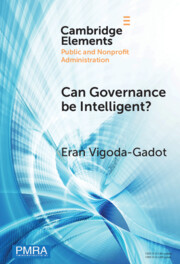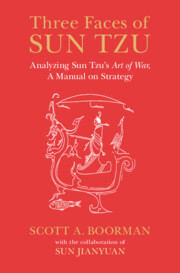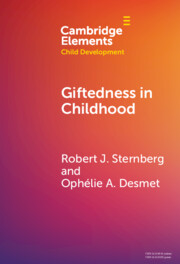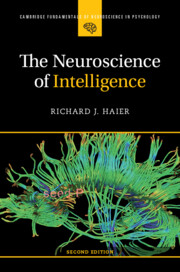309 results
Chapter 23 - Great Games
- from Part IV - Anxious Neighbourhoods, Uncertain Futures
-
-
- Book:
- Europe in British Literature and Culture
- Print publication:
- 13 June 2024, pp 369-384
-
- Chapter
- Export citation
Chapter 4 - Intelligence, Cognition, and Expertise
- from Part I - Transitions
-
- Book:
- Transition Expertise and Identity
- Published online:
- 30 May 2024
- Print publication:
- 06 June 2024, pp 37-56
-
- Chapter
- Export citation

Can Governance be Intelligent?
- An Interdisciplinary Approach and Evolutionary Modelling for Intelligent Governance in the Digital Age
-
- Published online:
- 14 May 2024
- Print publication:
- 06 June 2024
-
- Element
- Export citation
2 - Diplomacy as an Instrument of Statecraft
-
-
- Book:
- Diplomatic Tradecraft
- Published online:
- 15 March 2024
- Print publication:
- 28 March 2024, pp 31-50
-
- Chapter
- Export citation
A - Strategist Should Be Calculating
-
- Book:
- Three Faces of Sun Tzu
- Published online:
- 07 March 2024
- Print publication:
- 15 February 2024, pp 54-109
-
- Chapter
- Export citation

Three Faces of Sun Tzu
- Analyzing Sun Tzu's Art of War, A Manual on Strategy
-
- Published online:
- 07 March 2024
- Print publication:
- 15 February 2024
A - Strategist Should Be Calculating
-
- Book:
- Three Faces of Sun Tzu
- Published online:
- 07 March 2024
- Print publication:
- 15 February 2024, pp 54-109
-
- Chapter
- Export citation
4 - Disorders of Thought and Speech
-
- Book:
- Fish's Clinical Psychopathology
- Published online:
- 12 January 2024
- Print publication:
- 01 February 2024, pp 42-62
-
- Chapter
- Export citation
ESPIONAGE LAW IN THE UK AND AUSTRALIA: BALANCING EFFECTIVENESS AND APPROPRIATENESS
-
- Journal:
- The Cambridge Law Journal / Volume 83 / Issue 1 / March 2024
- Published online by Cambridge University Press:
- 22 December 2023, pp. 62-98
- Print publication:
- March 2024
-
- Article
-
- You have access
- Open access
- HTML
- Export citation
3 Fluoride Exposure and Hypothyroidism in Pregnant Women: A Potential Mechanism of Fluoride Neurotoxicity
-
- Journal:
- Journal of the International Neuropsychological Society / Volume 29 / Issue s1 / November 2023
- Published online by Cambridge University Press:
- 21 December 2023, pp. 866-867
-
- Article
-
- You have access
- Export citation
2 Rethinking the Neuropsychology of g: Structural and Functional Lesion Network Mapping of General Cognitive Ability
-
- Journal:
- Journal of the International Neuropsychological Society / Volume 29 / Issue s1 / November 2023
- Published online by Cambridge University Press:
- 21 December 2023, p. 607
-
- Article
-
- You have access
- Export citation
9 The Correlation of IQ and Executive Function of VLBW and ELBW Preterm Children with Normal Early Development
-
- Journal:
- Journal of the International Neuropsychological Society / Volume 29 / Issue s1 / November 2023
- Published online by Cambridge University Press:
- 21 December 2023, pp. 619-620
-
- Article
-
- You have access
- Export citation
40 Sex Differences in Emotional Intelligence Ability and Risk-Taking Behavior
-
- Journal:
- Journal of the International Neuropsychological Society / Volume 29 / Issue s1 / November 2023
- Published online by Cambridge University Press:
- 21 December 2023, pp. 828-829
-
- Article
-
- You have access
- Export citation

Giftedness in Childhood
-
- Published online:
- 02 December 2023
- Print publication:
- 18 January 2024
-
- Element
- Export citation
Chapter Three - Myth 3 You Can’t Write That and Be Smart
-
- Book:
- You Can't Write That
- Published online:
- 09 November 2023
- Print publication:
- 23 November 2023, pp 48-66
-
- Chapter
-
- You have access
- Open access
- HTML
- Export citation
Detecting cognitive decline in high-functioning older adults: The relationship between subjective cognitive concerns, frequency of high neuropsychological test scores, and the frontoparietal control network
-
- Journal:
- Journal of the International Neuropsychological Society / Volume 30 / Issue 3 / March 2024
- Published online by Cambridge University Press:
- 26 September 2023, pp. 220-231
-
- Article
-
- You have access
- Open access
- HTML
- Export citation
Cyber Intelligence and Influence: In Defense of “Cyber Manipulation Operations” to Parry Atrocities
-
- Journal:
- Ethics & International Affairs / Volume 37 / Issue 2 / Summer 2023
- Published online by Cambridge University Press:
- 29 August 2023, pp. 161-176
-
- Article
-
- You have access
- Open access
- HTML
- Export citation
The Ethics of Economic Espionage
-
- Journal:
- Ethics & International Affairs / Volume 37 / Issue 2 / Summer 2023
- Published online by Cambridge University Press:
- 29 August 2023, pp. 116-133
-
- Article
- Export citation

The Neuroscience of Intelligence
-
- Published online:
- 13 July 2023
- Print publication:
- 27 July 2023
The developmental interplay between the p-factor of psychopathology and the g-factor of intelligence from age 7 through 16 years
-
- Journal:
- Development and Psychopathology , First View
- Published online by Cambridge University Press:
- 05 July 2023, pp. 1-10
-
- Article
-
- You have access
- Open access
- HTML
- Export citation



